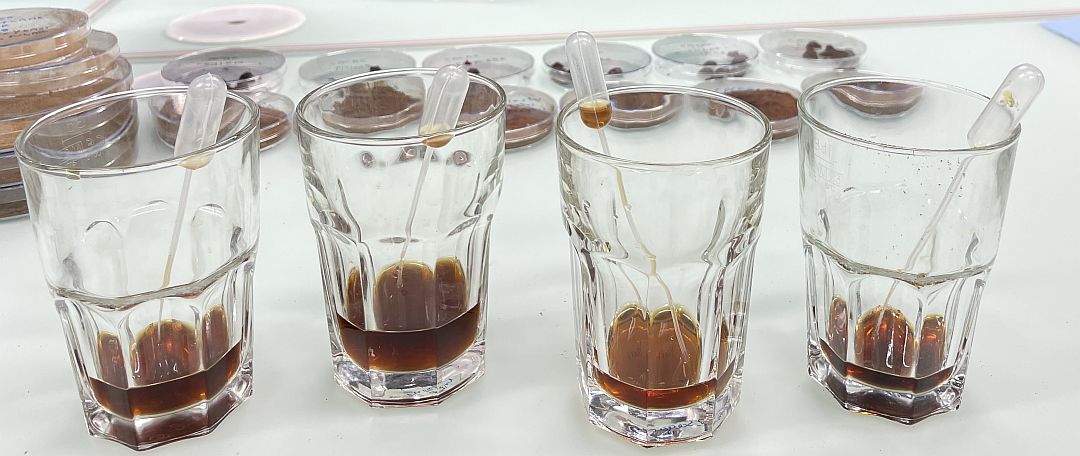Guest Post by Willis Eschenbach
Sadly, I’m in a disagreement with a very good man and a very good scientist, Dr. Roy Spencer. Dr. Roy and Dr. John Christy are the brains behind the satellite measurements of the temperature of the atmosphere. Unfortunately, nearly a decade ago he falsely accused me of plagiarism by saying:
I’ve previously commented on Willis thermostat hypothesis of climate system regulation, which Willis never mentioned was originally put forth by Ramanathan and Collins in a 1991 Nature article.
There’s a simple reason I didn’t mention it. R&C’s hypothesis was as follows:
Observations made during the 1987 El Nio show that in the upper range of sea surface temperatures, the greenhouse effect increases with surface temperature at a rate which exceeds the rate at which radiation is being emitted from the surface. In response to this ‘super greenhouse effect’, highly reflective cirrus clouds are produced which act like a thermostat shielding the ocean from solar radiation. The regulatory effect of these cirrus clouds may limit sea surface temperatures to less than 305 K.
Heck, the essence of their hypothesis is obvious from the title of R&C’s study, which is “Thermodynamic regulation of ocean warming by cirrus clouds deduced from observations of the 1987 El Niño”.
Cirrus clouds.
Now, my hypothesis is that emergent phenomena such as thunderstorms regulate the temperature, particularly via the timing of their emergence. I’ve said nothing about a “super greenhouse effect”. I’ve said nothing about “cirrus clouds”. Read the link just above. No mention of either one. The one and only similarity is that we both use the word “thermostat”.
In addition, R&C’s hypothesis is limited to explaining the upper-temperature limit of the “Pacific Warm Pool” in the western Pacific, a very small part of the ocean.
My hypothesis linked above, on the other hand, covers all areas where we see thermally driven thunderstorms, which is a large percentage of the planet. And my hypothesis does not attempt to explain, or even discuss, the temperature of the Pacific Warm Pool.
And because the two hypotheses are totally different, I saw no reason to cite R&C’s hypothesis.
Why am I bringing this up now, nearly a decade later? Well, it’s because from time to time over the entire decade and right up until today, people have been saying things like “Willis can’t be a real scientist. Dr. Roy Spencer accused him of plagiarism, and Dr. Roy is a real scientist”.
The most recent time it happened, I lost the plot, and believe it or not, I actually said bad words. So I re-opened the discussion with Dr. Roy on his blog here. I asked him to either provide evidence that Ramanathan discussed the timing of thunderstorm emergence or to retract his statement.
Sadly, Dr. Roy hasn’t done either one. Instead, he’s simply claimed that my hypothesis about the daytime emergence of thunderstorms is wrong because the peak rain time over the open ocean is at night. He said that I was conflating thunderstorms near islands with deepwater thunderstorms, viz:
First of all, the diurnal peak in oceanic convection occurs at night, not during the daytime. Only near islands (or over the continents) does it shift to the afternoon, which is a local sea breeze effect around islands.
I have no idea what that has to do with his claim that I did not give proper credit to Ramanathan. Whether my hypothesis about the timing of emergence is true or not is immaterial to that question.
However, objections to my hypothesis matter even if they’re totally unrelated to the question of false accusations of plagiarism. And unlike Dr. Roy, I’ve done extensive blue-water sailing in tropical regions, so I was basing my hypothesis on my experience rather than theory.
But as an aficionado of data, his claim forced me to look at open-ocean tropical rainfall data. For this, I used the TAO buoy data from the buoys on the Equator. Here are the locations of the eight equatorial TAO buoys in question.
Figure 1. Equatorial TAO buoys used in this story, shown in red. Hollow squares do not have 10-minute rainfall data.
And here is the rainfall averaged across those 8 TAO buoys, by ten-minute intervals.
Figure 2. Average rainfall by ten-minute intervals, TAO buoys. Black/yellow line is a lowess smooth of the data.
So my memory of the tropical ocean is verified by observations of the open ocean rainfall. As I said in my original post linked above, the low point in the rain is in the morning. This is followed by a sudden increase in rain that starts just before noon, the sharpest increase in the 24-hour period. This leads to an afternoon peak in rainfall, due to the warming of the surface and the ensuing late-morning formation of first a cumulus field and then the afternoon emergence of the thunderstorms. This is exactly as I discussed in my hypothesis.
And Dr. Roy is also right, the largest peak of rainfall is in the early morning hours. Both are true. Go figure.
I focused on the daytime changes for a simple reason—that’s when the sun is shining, so that is when the cumulus field and the ensuing thunderstorms have the greatest cooling effect on the radiation balance. Why the greatest effect? Because in addition to all the cooling effects that they have both day and night, during the day they reflect hundreds and hundreds of watts per square meter of solar radiation.
And because the daytime cumulus field and the thunderstorms have such a large effect on the surface temperature, the timing of their emergence is critical to the size of the effect. If the surface is cool and the cumulus/thunderstorms form later in the day, hundreds of watts per square meter of extra sunlight comes in to warm the ocean. And the reverse is true. When the surface is warmer and the cumulus/thunderstorms form earlier, a large amount of sunlight is blocked and the ocean is cooled.
On the other hand, Ramanathan and Collins, as far as I know, said nothing about the timing of the emergence of the cumulus field/thunderstorms.
So that’s where the situation stands with Dr. Roy and myself. Part of the tragedy for me is that I have a variety of scientific heroes. And from the time well before I met Dr. Roy up to the present, he and Dr. Christy have been my heroes … and still are. Hey, whether or not Dr. Roy and I might disagree, they’ve both done an amazing piece of work using the Microwave Sounding Unit to calculate atmospheric temperatures.
In any case, I wanted to raise this again in the hopes that Dr. Roy and I could put it behind us. Please do NOT insult or rag on Dr. Roy in the comments. He’s one of the good guys, and this has only come up again because I’m bone-tired of folks accusing me of plagiarism and citing Dr. Roy as their authority. Not true, not fair.
Here on our hillside, blessed rain is forecast … which of course means I have to get out my ladder and mess with the roof. Ah, the joys of home ownership.
Let me say in closing that I’ve been suspended from Twitter for a week now. I have no idea why. It was my belief that I was coloring inside the lines, and they don’t give any reason. I discuss the suspension on my blog in a post called “In Twitter Suspense“. And a copy of my most recent letter to the appeals board is here.
So if any of my friends are on Twitter, can I ask you to email @elonmusk to ask that my suspension be lifted? My Twitter handle is @WEschenbach.
Thanks to all, including thanks to Dr. Roy for all of his good work.
w.
AS USUAL: I politely request that when you comment, you quote the exact words you are discussing. This helps greatly in avoiding the kinds of misunderstandings that the interwebz are famous for.
Related
Source link
Author Willis Eschenbach







